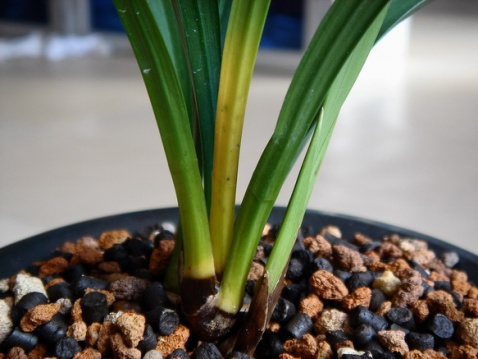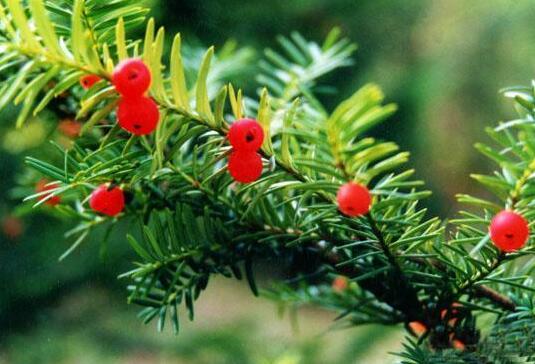Methods of preventing water rot of orchids
Around the Beginning of Summer is the peak period of orchid sprouting. During this period, the orchid seedlings are strong and grow fast. However, if we do not pay attention to reasonable watering and control of soil humidity, it is easy to make orchid seedlings get water rot, and even cause dead seedlings. The ways to prevent the disease are as follows:
① grows orchids in the shape of steamed bread, that is, the soil barrier in the middle is high, and the soil at the edge of the basin sinks, making the water seep down.
When the tender leaves of ② orchid seedlings grow out of □, do not spray water, and do not let water drip into the tender leaves, so as to keep the center of the tender leaves clean and pollution-free.
③ watering from the edge of the basin, do not water the center of the orchid, at the same time, control the amount of watering, soak the basin or flood irrigation, the waterline to the waist of the basin.

Analysis on the causes of stem rot of orchids
The pandemic of any kind of plant disease is caused by the interaction of plant disease resistance, the number of pathogens and environmental conditions, and occurs under the condition that the three are conducive to the disease. In orchids, the pandemic of orchid stem rot in recent years can also be analyzed by the relationship among the above three. The specific factors are as follows:
1. Disease resistance of orchids.
There are great differences in the disease of different kinds of orchids. Generally speaking, the leaves of the orchids are thicker, and the hard orchids have strong disease resistance, such as tiger orchids, iron bone in Jian Cymbidium, etc., generally, the stem rot is more tired, but the leaf sheath structure is compact. The orchids with small color are more serious, and the disease must be different for the same species of orchids and different breeding places. Natural cultivation and balcony orchid cultivation generally have strong disease resistance, while greenhouse seedlings with high temperature and humidity generally have weak disease resistance. The disease resistance of orchids is also related to the growth of orchids (whether the ramet is reasonable or not). In short, natural cultivation of strong orchids, generally strong disease resistance, while a small number of greenhouse seedlings per pot, disease resistance is weak, easy to occur, in the past two years, the main loss caused by the disease is this type of orchid.
2. Number of pathogens
Orchid stem rot disease is more serious in orchid orchid garden, generally orchid trading volume, strong mobility of orchid garden, a large number of orchids flow, (orchid professional trading orchid garden) is easy to spread pathogens, orchid plants in the orchid garden are more susceptible to the disease, in the same orchid garden, there are infected orchid plants, and do not pay attention to prevention, can be in the environment (warm). Under suitable conditions, reproduction and accumulation of a large number of pathogens in a short period of time can easily lead to an orchid disease pandemic. Generally, most orchids in an orchid garden can be destroyed within 15 days, and a large number of pathogens will be left behind after the orchid disease epidemic, which will provide enough pathogens for the orchid disease epidemic in the next few years, which is easy to cause a vicious circle, so cut off the transmission source of pathogens and prevent diseases and insect pests regularly. For orchid gardens with high mobility, orchids should at least be placed in different places where they can be isolated from each other, so as to reduce the susceptibility of most orchids.
3. Environmental conditions
The main environmental conditions for the outbreak of stem rot of orchids are high temperature (the average temperature is 25 murmurmur30) and high humidity (air relative humidity is more than 80%, water content of basin soil is more than 90% of the maximum soil water holding capacity,), and orchid nutrition imbalance, the core is partial application of autumn nitrogen fertilizer, random application of various auxins, resulting in weak orchid plants and low disease resistance. It can be said that all the orchid orchids with serious stem rot are in line with the above conditions in varying degrees.
Symptoms of stem rot of orchids
Usually it first harms the mature orchid leaf sheath and the tissue near the base of the leaf, from the inside to the outside, and in severe cases, it causes the pseudobulb to rot deeply, and then causes the wilting of the leaf. The lesion and cross-section can sometimes be seen as dark brownish red. The symptoms of the disease are not obvious after infection, the summer high temperature is acute, when the temperature is low, the course of the disease will be very long, a few months or even longer, the death is very miserable. It is the most harmful disease of Cymbidium.
1. In the early stage of the disease: stem rot, also known as Fusarium wilt and Fusarium wilt, caused by Fusarium oxysporum, Fusarium oxysporum, and carrot soft rot Erwinia. The two bacteria produce symbiosis, mutating the second generation of hyphae, and because of the symbiosis of soft rot bacteria. An orchid disease with high incidence and serious loss in recent years.
2. Bacteria: the bacteria belong to Fusarium oxysporum of the genus Fusarium oxysporum, whose hyphae are segmented and produce two kinds of spores, the microspores are spindle-shaped to long-shaped, and the macrospores are generally sickle-shaped, hence the name. The strain is white, pink to purplish red, and the diseased tissue is sometimes brownish red.
3. The conditions of onset and route of transmission: trauma, acidic materials and high temperature are easy to spread the disease. It is also common to go down the mountain grass with disease. The bacterial bracts overwintered in the diseased and residual tissue and carrier matrix and invaded through water, wound and manual operation.
Control of stem rot of orchid
1. Pay attention to the diseased grass down the hill.
2. Irrigate and prevent it once with 800 times solution of dimethazone in the season of high temperature and frequently occurring disease.
3. Irrigate with 800 times of dimethazone when the grass is down the hill and on the basin.
4. Replace the diseased grass with new pots and soil, and irrigate with 800 times of dimethazone as water. After drying, water and medicine are used for three consecutive times as a course of treatment. It's usually curable. Dixong: yellowish brown powder, aqueous solution is reddish brown, sensitive to light, direct sunlight will decompose. This is a kind of soil fungicide, which has internal absorption and permeability when used in plants, and can maintain its efficacy for a long time after being absorbed by plant roots and leaves. It's harmless to plants. It is harmful to people and animals. Wash hands with soap after use. It is generally available in agricultural stores.
Occurrence season of stem rot
The peak of the disease is from May to September every year, and the earliest onset can occur in February; the environment of high temperature and humidity is more conducive to the rapid development of the disease. The typical symptom of the disease is the withering and yellowing of the old grass (it is different from the soft rot, which begins to rot from the new seedlings, which has an unusually strong smell). The performance is as follows: the core leaves of the old grass start yellowing from the base, and then develop rapidly from the bottom up, from the inside out. A seedling of old grass will wither and dry within 1-2 days, and if touched by hand, the whole grass will break from the ring of the petiole. Inexperienced Lan you often think that they are fading old grass, but by the time the disease continues to develop and more strong grass falls down, it is often incurable. The root system of the diseased seedling is still intact, there is even a crystal head, and the new buds issued in that year are also intact. But if you cut open the false corm of the diseased seedling, you will find that the inside of the corm has turned brown, even rotten. Continue to cut down can also find that those green leaves of seemingly intact seedlings, the interior of the pseudocorm has been infected and discolored, falling grass is only a matter of time. It can be seen that the spread of the disease is very hidden.
- Prev

Control methods of Alternaria leaf spot in cockscomb
Damaging plants: celosiacristatal. Distribution and harm: the disease mainly occurs in Zhejiang, Yunnan and other places, the harm is serious. Symptoms: there are round, oval, irregular dark brown spots on the front of the leaf. The initial lesion is a small dot, the center is white, and the outer ring is brown.
- Next

The yew blossoms and bears fruit for several years, and the culture method / growth environment / variety determines the fruiting time.
Although the efficacy and function of yew mainly lies in its medicinal value, many flower lovers grow yew not for medicinal purposes, but for ornamental purposes. When its small red fruit stands on the branches, it makes the whole plant more beautiful. So how many years does the yew blossom and bear fruit? The editor will tell you the answer.
Related
- Fuxing push coffee new agricultural production and marketing class: lack of small-scale processing plants
- Jujube rice field leisure farm deep ploughing Yilan for five years to create a space for organic food and play
- Nongyu Farm-A trial of organic papaya for brave women with advanced technology
- Four points for attention in the prevention and control of diseases and insect pests of edible fungi
- How to add nutrient solution to Edible Fungi
- Is there any good way to control edible fungus mites?
- Open Inoculation Technology of Edible Fungi
- Is there any clever way to use fertilizer for edible fungus in winter?
- What agents are used to kill the pathogens of edible fungi in the mushroom shed?
- Rapid drying of Edible Fungi

